Edinburgh Scotland: A Geek Girl’s Guide of Castles, Cafes, Speakeasies, and More
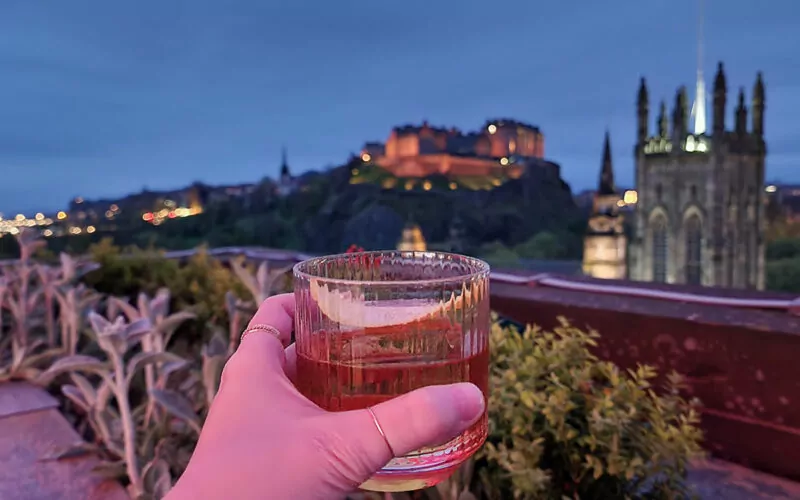
Edinburgh, the capital of Scotland, is a city that effortlessly blends the old and the new, creating a vibrant and eclectic atmosphere that’s irresistible to those who love to explore. It’s a city where medieval castles coexist with tasty cafes and hidden speakeasies, making it a paradise for those who love history – but also consider themselves foodies.
Edinburgh, located between the rivers Almond and Esk on the southern shore of the Firth of Forth in Lothian, is divided into the Old Town and New Town. In the heart of this city, you’ll find centuries-old cobblestone streets winding their way up to the iconic Edinburgh Castle, a sight that will make any history geek’s heart skip a beat. Not far from the castle, tucked away in the winding alleyways, are hipster cafes serving everything from artisanal coffees to vegan haggis. It’s a delicious adventure for the foodie geek!
And when the night falls, the city comes alive in a different light. Speakeasies, if you know how to find them, open up, inviting you for cocktails that are nothing short of a work of art. Countless hidden gems in this city complement the must-see destinations that history made famous. So, we’ll dive into a bit of both – the must-see cultural spots as well as a few less mainstream locations that will enrich anyone’s visit.
But first, let’s start with a little bit of the Edinburgh’s history, so that you can fully appreciate what all the city has to offer.
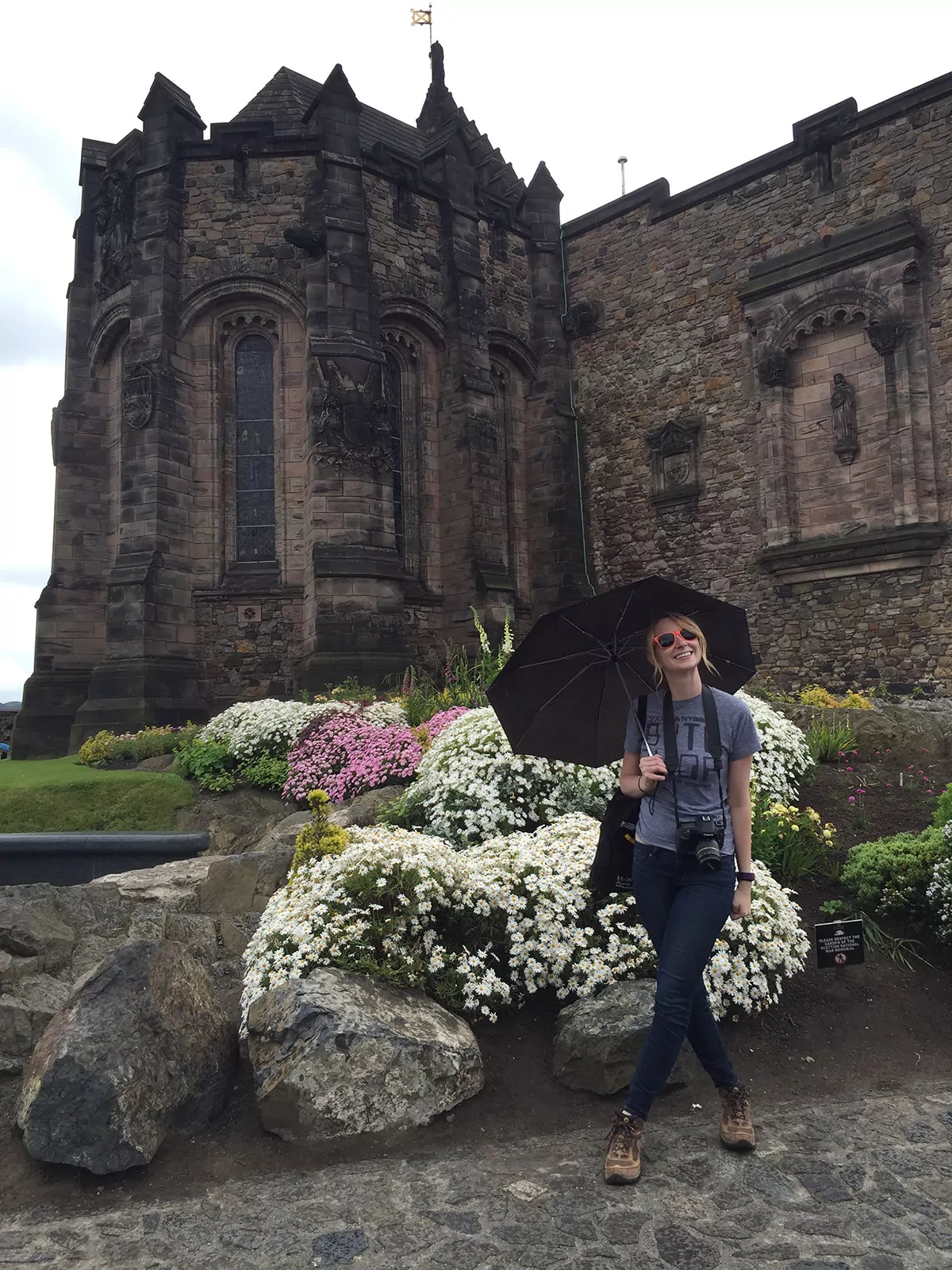
How Edinburgh Got Its Name
But first, let’s dive into a little bit of history. How did Edinburgh get its name? The Edin in Edinburgh is derived from Eidyn, which is what the region is referred to in the Brittonic Celtic language Cumbric. The district of Eidyn centers on the stronghold of Din Eidyn, which is the “dun” or “hillfort” of Eidyn, and is believed to be located at Castle Rock, which is now where Edinburgh Castle is located.
Following the siege of Din Eidyn by Northumbrian Angle king Oswald in 638 AD, the region came under Germanic influence for 300 years. This laid the foundation of the development of the Scots before the town would be known as Scotland by 934 AD. The language would also shift from Cumbric to Northumbrian Old English and then Scots. The Brittonic “din” in Din Eidyn would then be replaced by “burh” resulting in Edinburgh.
Edinburgh also goes by other names. It is affectionately called Auid Reekie, which is Scots for “Old Smoky.” This is because of the views of the country of the smoke-covered Old Town. In the 1820 novel “The Abbot” by Walter Scott, a character referred to Edinburgh as “Auid Reekie.”
The “Athens of Britain”
Edinburgh has also been referred to since the early 19th century as the “Athens of the North,” or “Athens of Britain,” or even “Modern Athens.” Such comparisons made to Edinburgh were made as early as the 1760s. This comparison was because of the notable similarities between the two capitals.
Edinburgh’s Castle Rock reminded tourists of the Acropolis in Athens. Certain aspects of neoclassical architecture and the layout of New Town in Edinburgh also reminded tourists of Athens. Both cities also had flat, fertile agricultural land that sloped down to a port. The Scottish Enlightenment also happened to be influenced by Ancient Greek philosophy.
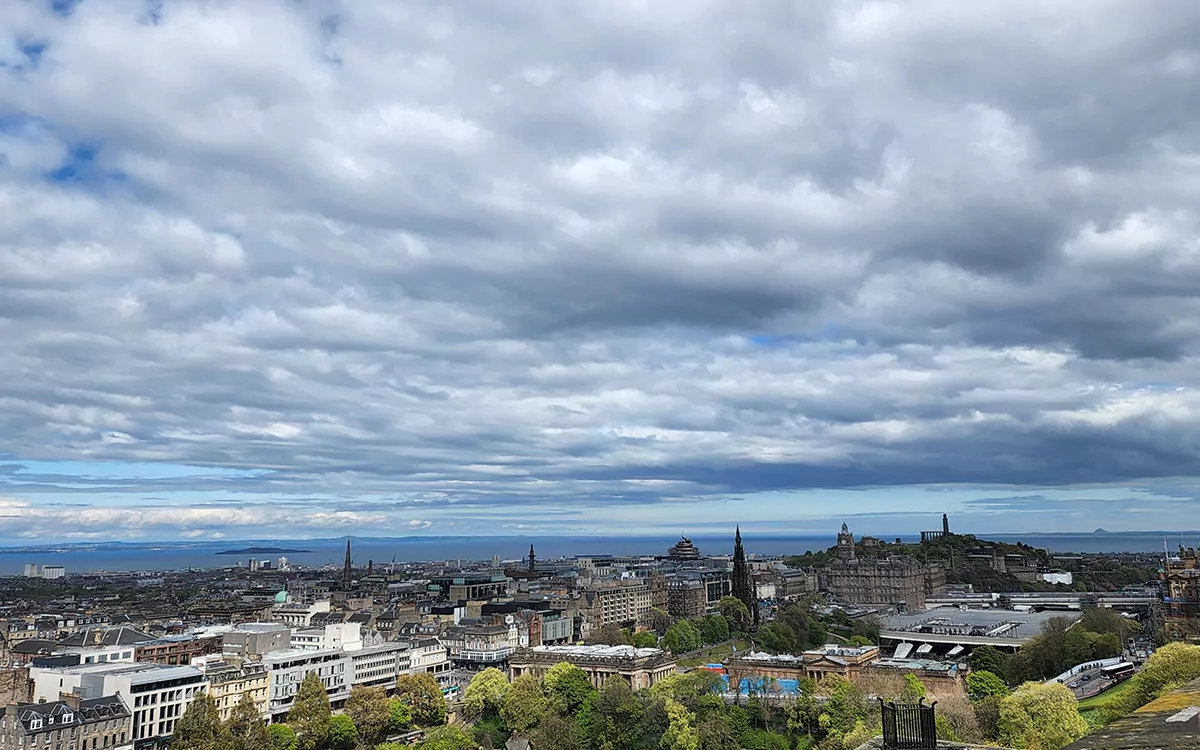
The History of Edinburgh
The earliest known human habitation in Edinburgh was at Cramond, following evidence of a Mesolithic campsite that dates back to 8500 BC. Traces of settlements during the Bronze Age and Iron Age were also found on monuments, including Castle Rock, Arthur’s Seat, Craiglockhart Hill, and the Pentland Hills.
By the end of the first century AD, the Romans documented a Brittonic Celtic tribe living in the area, whom they called the Votadini. The Votadini transitioned into the Gododdin kingdom during the Early Middle Ages, with Eidyn as one of the districts. At this time, Castle Rock, believed to be the stronghold of Din Eidyn, became the major center of the kingdom.
In 638, forces loyal to King Oswald of Northumbria lay siege to the Gododdin stronghold. The control of Lothian passed to the Angles and their influence would prevail in the area for 300 years. By 950, during the reign of Indulf, the son of Constantine II, the “burh” or “fortress” was referred to in the 10th Century Pictish Chronicle as “Oppidum Eden.” It was then abandoned to the Scots.
Moving into the 12th Century…
In the early 12th century, the royal burgh was founded by King David I on land that belonged to the crown. The first documented evidence of a medieval burgh was a royal charter dating between 1124 and 1127 by King David I granting a toft in burgo meo de Ededenesburg to the Priory of Dunfermline. Also under King David I’s reign was the creation of the shire of Edinburgh.
However, by 1305, Lothian’s eastern and western parts became Haddingtonshire and Linlithgowshire. This left Edinburgh as the county town of a shire that covered central Lothian, then called Edinburghshire or Midlothian. Edinburgh was under English control from 1291 to 1314 and from 1333 to 1341.
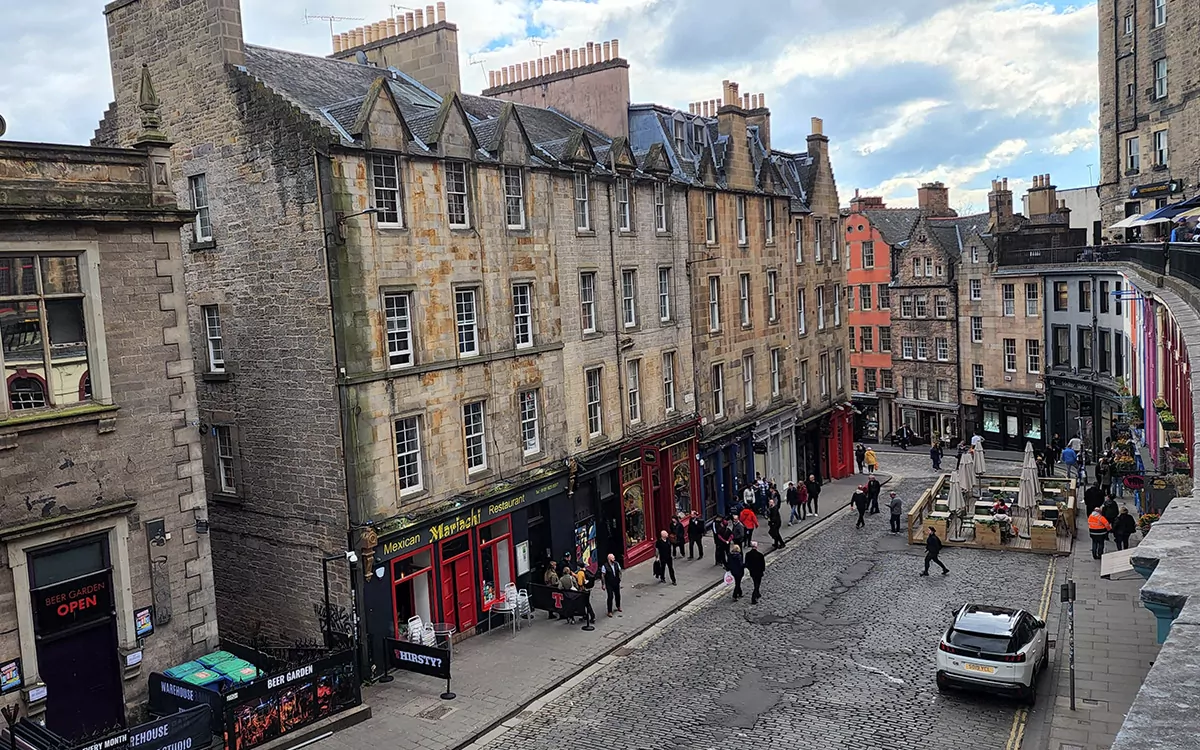
Edinburgh in Recent History
By the 19th and 20th centuries, Edinburgh became an industrial center. Printing, brewing, and distilling in Edinburgh grew at the time and were joined by new industries like rubber works and engineering, among others. In 1821, Edinburgh surpassed Glasgow as the second-largest city in Scotland. The city center between Princes Street and George Street also became a major commercial district, partly fueled by the introduction of railways by the 1840s.
During that time, the Old Town increasingly descended into poverty, but improvements were made under Lord Provost William Chambers in the 1860s. It was with these improvements that the area of the Old Town is what we see today. These improvements would continue in the early 20th century because of Scottish pioneer Patric Geddes.
By the 1990s, a “financial district” was established in Edinburgh and has continued to develop and make the city the second-largest financial and administrative center in the UK. Financial services make up one-third of all commercial office space in the city along with the development of Edinburgh Park.
In 1998, the Scotland Act was put into effect, and the devolved Scottish Parliament and Scottish Executive were established, which have been renamed into the Scottish Government since September 2007. Both are based in Edinburgh and are responsible for governing Scotland, while other matters are under the jurisdiction of the British Parliament in London.
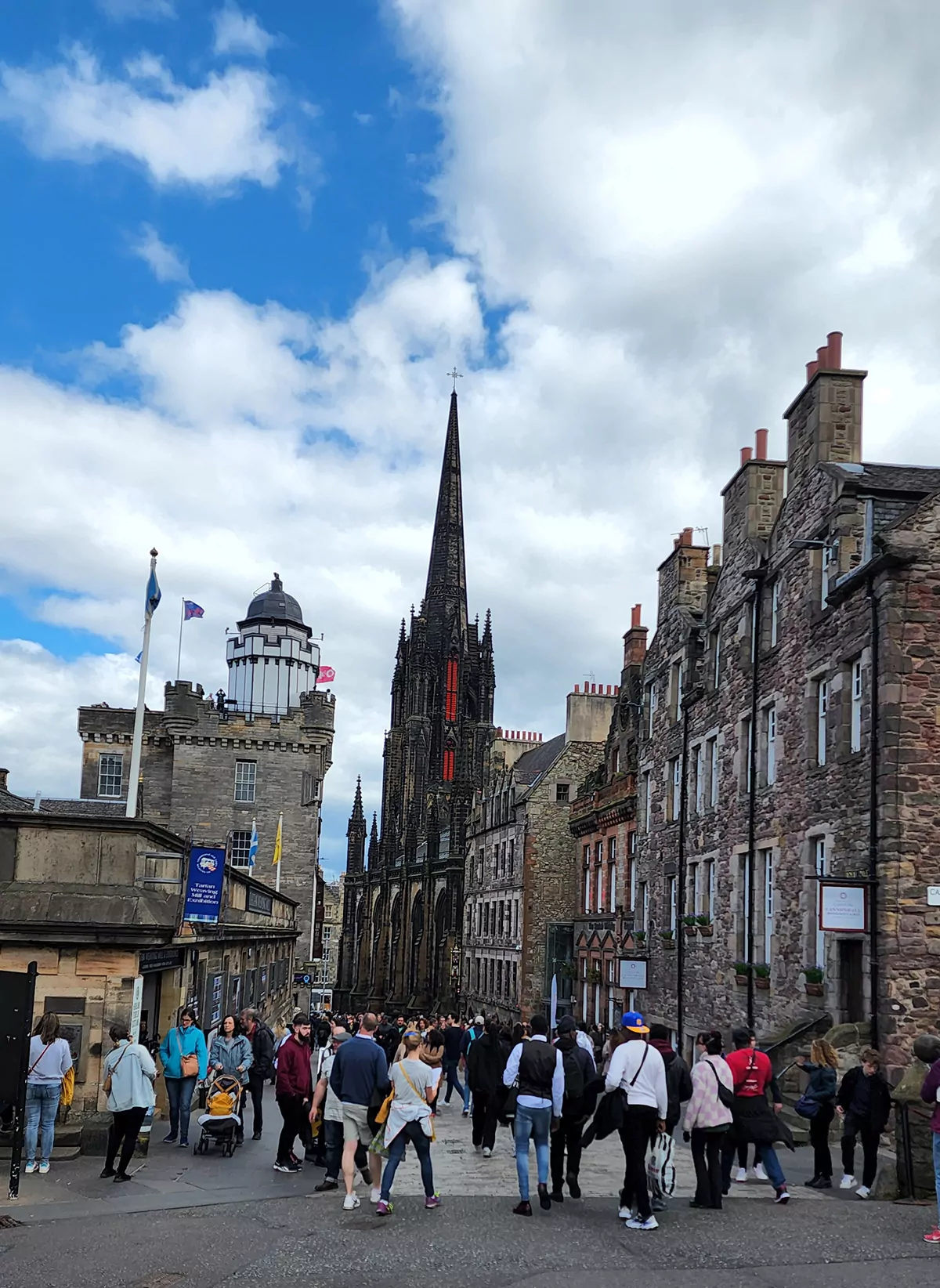
Must See Historical Landmarks
So now that we’ve dove into Edinburgh’s rich history. Let’s take a look at the Scottish capital’s historical landmarks. If you’re unsure where to go and what to see, here are some of the historical landmarks to see in Edinburgh, along with some of my personal recommendations from places I had a wonderful experience during my visits to the city.

Edinburgh Castle
No one should visit Edinburgh without going on a tour of Edinburgh Castle. Located on top of Castle Rock and overlooking the city, Edinburgh Castle is where some of the most important Scottish artifacts are kept, including the Honours of Scotland, the oldest crown jewels in the UK, as well as the Stone of Destiny, which is the ancient symbol of the Scottish monarchy.
You can go on a self-guided tour or a guided tour of the castle grounds with a castle steward. There is also an audio guide available to listen in eight languages. A tip to be able to get a tour of Edinburgh Castle is to book early, as tickets tend to sell out quickly, especially in the summer months.
Watch out for the filing of the One O’Clock Gun from the castle grounds, which will be heard daily except on Sundays.
Arthur’s Seat
Another iconic historical landmark in Edinburgh is Arthur’s Seat in Holyrood Park. This landmark is on top of an ancient volcano 251 meters above sea level. It gives a 360-degree view of Edinburgh and the Lothians. From Arthur’s Seat, you can also see the medieval ruins of St. Anthony’s Chapel or feed ducks and swans on Duddingston Loch.
There are also paths and trails for visitors to follow, including the trail to St. Margaret’s Loch.
Lauriston Castle and Gardens
An attraction to visit around Edinburgh is the Lauriston Castle and Gardens. Tour the Lauriston Castle and Gardens for another look into Scottish history and the Edwardian interiors. There are guided tours done daily.
The Royal Mile
The Royal Mile is referred to as the main street of the Old Town in Edinburgh. It runs from a downward slope from Edinburgh Castle to Holyrood Palace and the Holyrood Abbey. The Royal Mile in itself is divided into six areas: The Castlehill and Castle Esplanade, Lawnmarket, High Street – the most popular one, Canongate, and Abbey Strand. The oldest parts of the six areas are Castlehill and Castle Esplanade, located closest to Edinburgh Castle.
Castle Esplanade holds some dark memories in history. It was an open space that was used to burn witches at the stake. Today, the Edinburgh Military Tattoo takes place in that space every summer.
Go on an Underground Walking Tour, learning more about the city through its underground vaults. Maybe take part in the Mountebank Comedy Walk for a mix of comedy and history with a stand-up comedian as your guide.
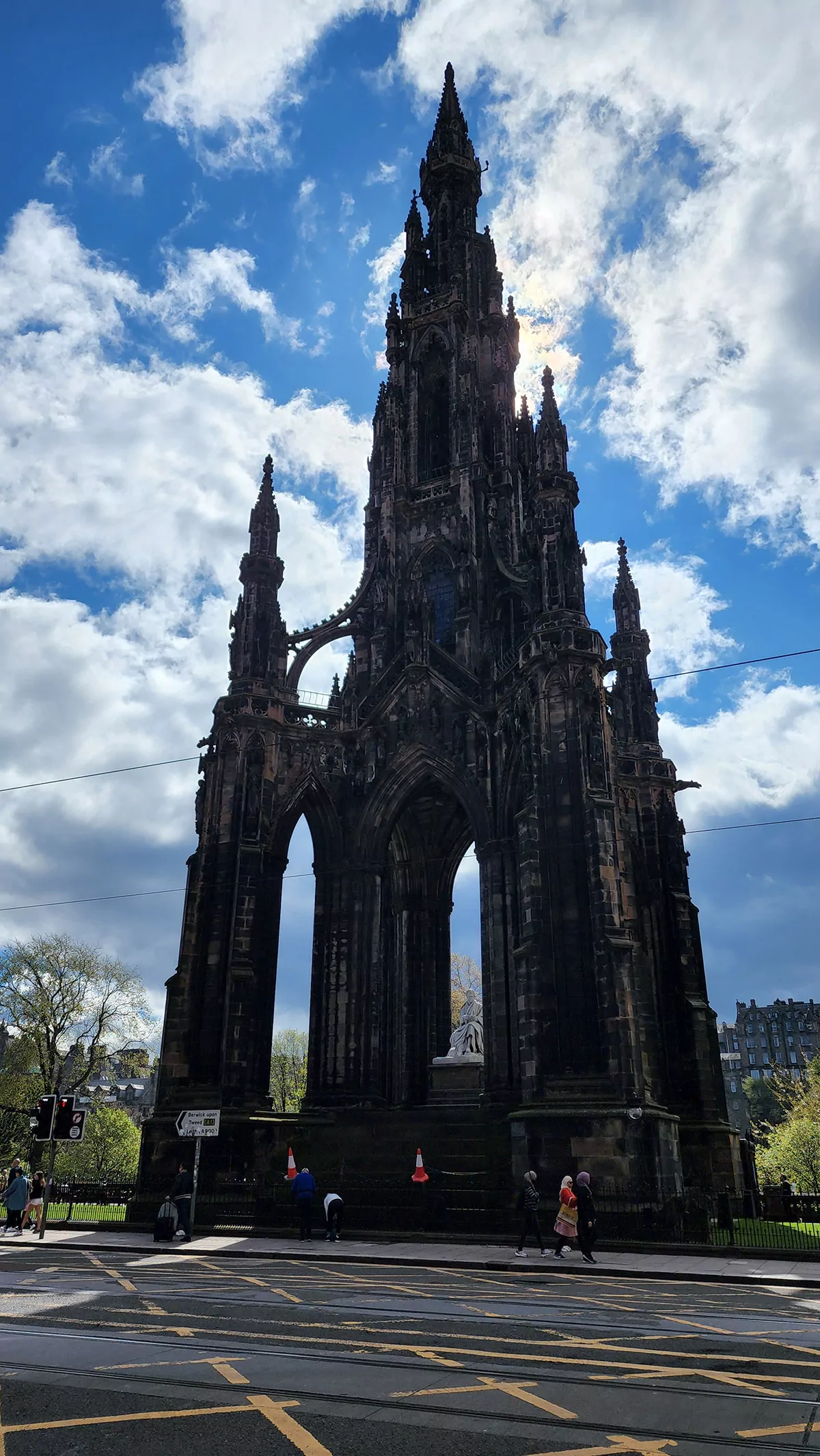
Scott Monument
Built in 1832, the Scott Monument was to commemorate the death of Sir Walter Scott, the beloved Scottish writer. The monument is decorated with carvings of characters from his novels. It is also the largest memorial to a writer in the world, measuring 200 feet high. Visitors can climb the 287 steps to the top for a beautiful view of the city.
The monument also has a Museum Room that has an exhibition on Scott’s life and work. You can still get a view of the monument from the bottom of the Playfair Steps on The Mound. There is also a statue of the beloved writer with his dog at the base of the Scott Monument.
Scottish National Gallery of Modern Art
For art lovers, there’s the Scottish National Gallery of Modern Art in Edinburgh. The gallery is made up of two buildings, which feature pieces from the 1900s to this day. Tour the gallery and look at the works of Matisse, Picasso, Emin, and Scottish artists. There’s also landscaped grounds that also feature sculptures by prominent artists like Tony Cragg and Barbara Hepworth.
Calton Hill
Another way to get the city’s best view is by climbing up the top of Calton Hill. Calton Hill has been designated a UNESCO World Heritage Site. It is home to a cluster of historical monuments, the most notable of which is the National Monument inspired by the Parthenon in Athens.
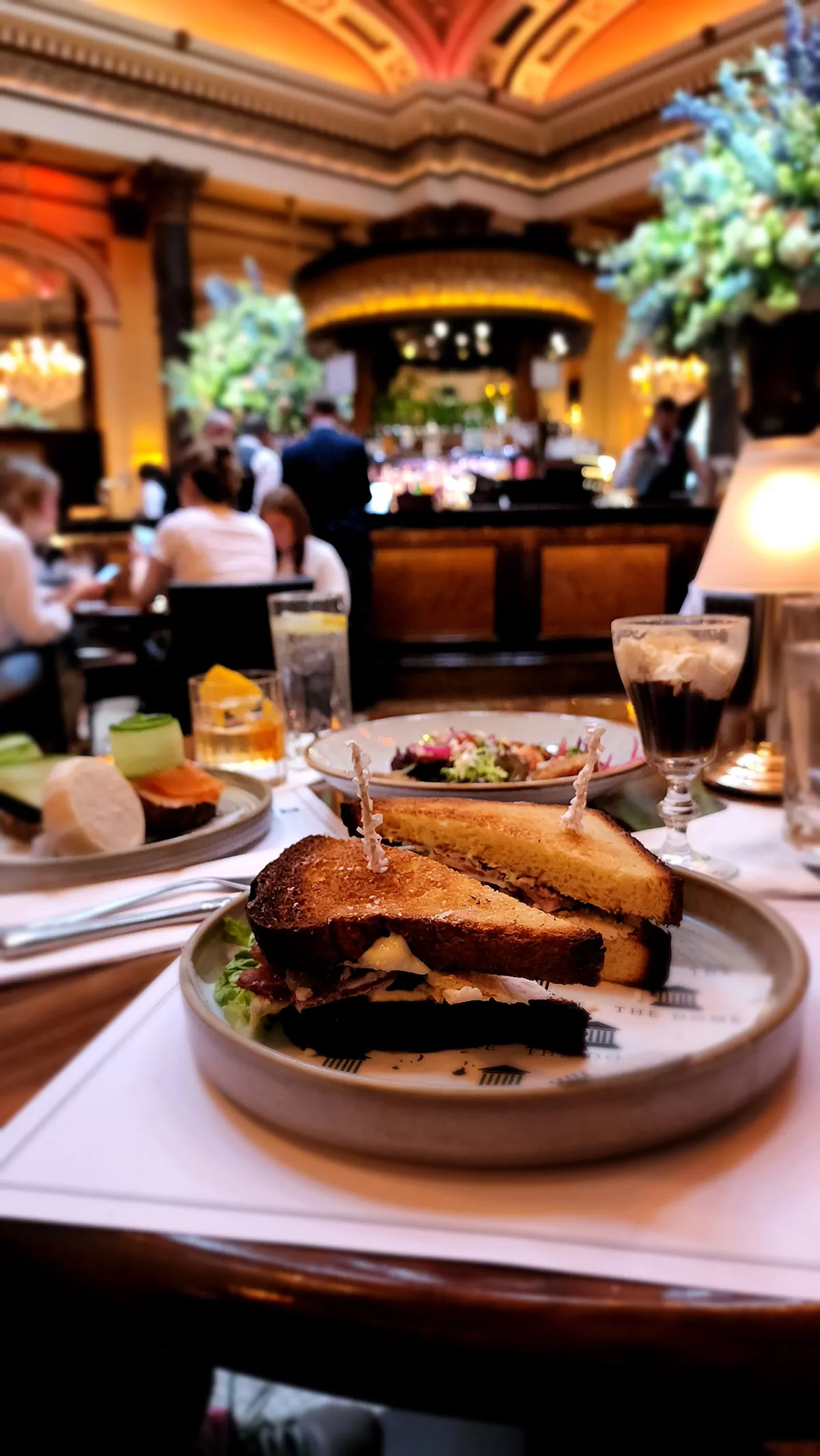
Cafes & Restuarants in Edinburgh
One of the best ways to experience Edinburgh is through its cuisine. The Scottish capital is full of cafes and restaurants that do just that. There’s the Michelin-starred Kitchin and Restaurant Martin Wishart. Mums, which serves British comfort food, and Grain Store, located on Victoria Street, are also located there.
If you’re touring Edinburgh Castle, the Cannonball House has been transformed into the Cannonball Restaurant. Also, a whisky bar, the restaurant is where visitors can find an Italian spin on classic Scottish dishes. There’s also The Witchery by the Castle, which I’ve dined at twice. It’s a fabulously creepy atmosphere (with an incredible history), but it’s pretty pricy for the overall meal.
While you’re in the Royal Mile, stop by the Scotch Whisky Experience to sample the finest Scottish whisky. There are also tours available for seasoned whisky drinkers and for first-timers. They offer tours of the virtual distillery. And, you can dine in its Amber Restaurant to enjoy modern Scottish cuisine with more whisky.
Super close by the Royal Mile were two additional restaurants I absolutely loved, The Devil’s Advocate (they had a fantastic old-fashioned cocktail) and Makars Gourmet Mash Bar (incredible Scottish cuisine).
Also worth mentioning is The Dome, which was our first stop during our last visit to Scotland. The restaurant was originally the site of the old Physicians’ Hall in 1775. However, as costs to complete the building rose by completion, the College was left in debt. It was eventually sold to The Commercial Bank of Scotland. It wasn’t until 1996 that The Dome opened. And, in my opinion, it’s the most beautiful restaurant in all of Edinburgh (and the food and cocktails do not disappoint either).
One Additional Favorite Spot!
And, if you’re looking for coffee, I highly recommend Grow Urban. There are a couple of locations of the shop, and it’s a delightful plant store with super tasty coffee.

Johnnie Walker Princes Street
Another place for whisky lovers is the flagship Johnnie Walker Princes Street. There are dining experiences, bars, and a whisky retail area within eight floors. You can book a personalized whisky experience and enjoy cocktails along with a view of the Edinburgh skyline from the 1820 rooftop bar. We made a dinner reservation at 1820 during our last visit to Edinburgh. It’s one of our favorite meals in the city.
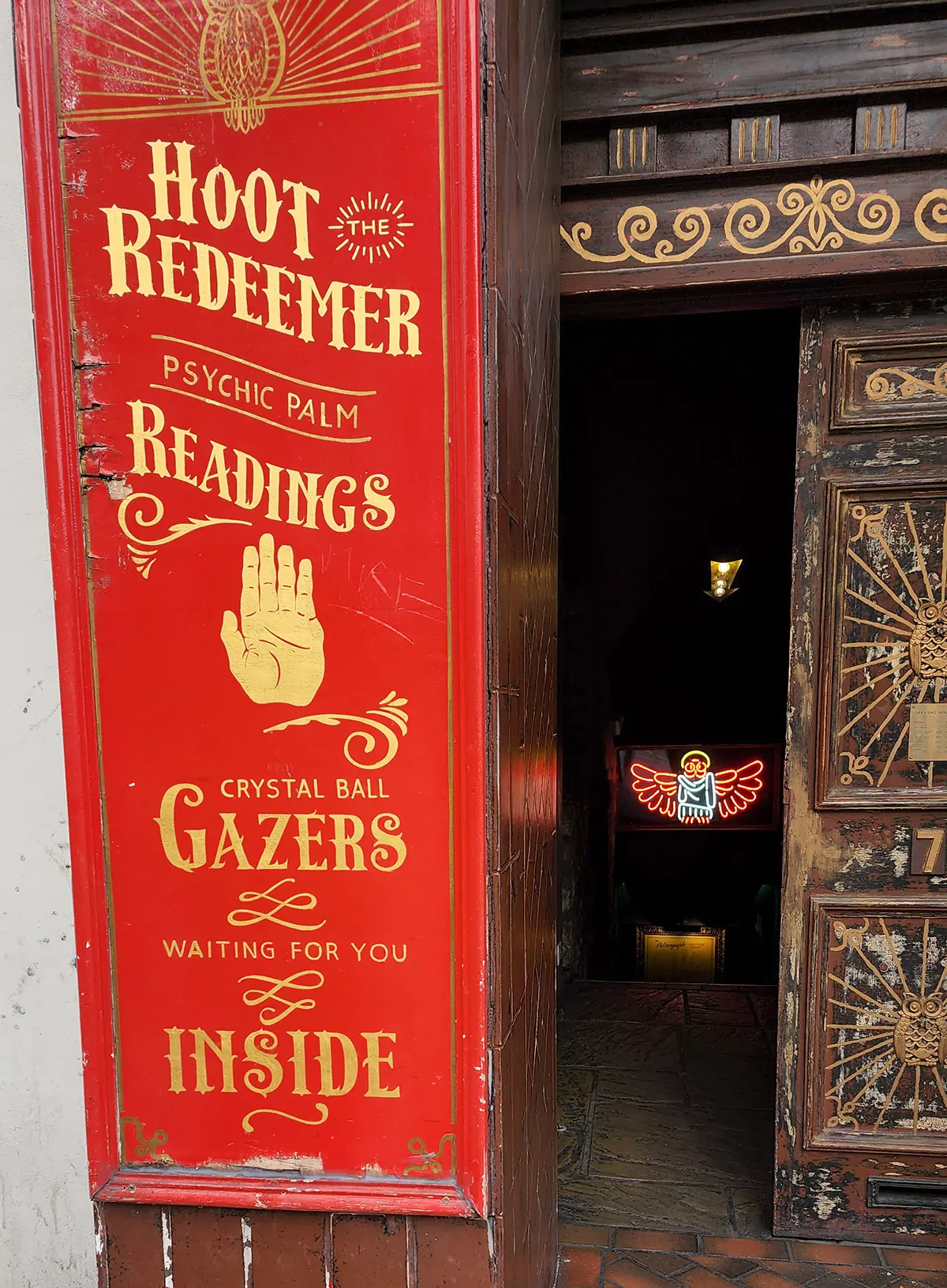
Edinburgh Speakeasies and Nightlife
The fun and activities in Edinburgh don’t stop at the end of the day. One of the things to do in Edinburgh at night is to visit the Edinburgh Dungeons. They often hold Dungeon Late events for adults who visit at night. The Edinburgh Dungeons is where you’ll learn about the Scottish capital’s more gruesome history. Walk the city’s streets as if it’s 1645 and the plague is rampant. Avoid the murderous Burke and Hare and maybe even face trial.
Another thing to do in Edinburgh at night is watch a ballet or musical theater event at the Edinburgh Festival Theatre. It’s one of the largest stages in the UK, with many high-profile acts having been performed there.
Literary geeks rejoice at the walking tour of Edinburgh through the popular Book Lovers tour from The Writer’s Museum. There’s also the spooky Underground City of the Dead ghost tour happening in the South Bridge Vaults.
If you’re looking for speakeasies, a few I’ve personally visited and can vouch for include Hoot the Redeemer, Panda and Sons, and Bramble Bar. Each had a unique atmosphere and stellar drinks. But being the nerd I am, the old-school arcade games won me over at Hoot the Redeemer. So it gets my vote as the best speakeasy in Edinburgh.
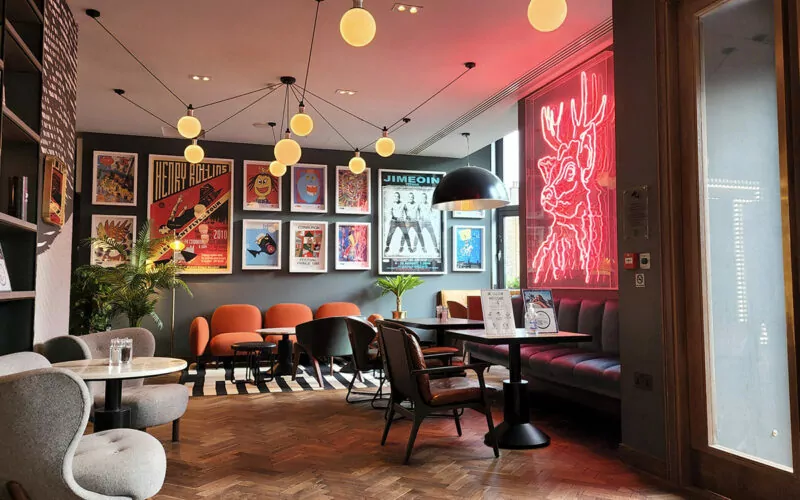
Where to Stay in Edinburgh
When in Edinburgh, there are a lot of accommodations for visitors to check into. It’s important to book an accommodation that suits your preferences in terms of experience, accessibility, and, most importantly, your budget. You can book self-catering accommodation, check into an Air BnB, or a cottage, or maybe into one of the hotels in the area.
A few hotel suggestions: there’s the Dakota Edinburgh, the Balmoral Hotel, which is close to the city center, and the Wilde Aparthotels. If you prefer the views of the countryside, boutique places like Craigengar Lodge in West Calder, the Forth Bridges View in Inverkeithing, the Glenskirlie House & Castle in Stirlingshire, and the Kingsmuir House in Peebles are also great options.
However, my top recommendation would be the ibis Styles Edinburgh on St Andrew Square. Not only is it a beautifully designed hotel, but it’s reasonably priced. It also has a fantastic breakfast buffet (included). Not to mention, it’s conveniently located in the middle of so many of the city’s beautiful destinations. The rooms were a bit tight. But that didn’t bother us as we weren’t hanging out in the hotel rooms other than to sleep in between our adventures of exploring the city.
Hopefully all the tips here will get you started on planning an epic trip to Edinburgh! If you can manage 4 to 5 days in the city, you’ll be able to get a good feel for all it has to offer. That being said, the more time you can spend there, the better. And if you can carve out some time to hop over to Leith, only a few miles away, you’ll discover some more tasty restaurants and bars. And even a nerd-themed pizza spot, Pizza Geeks, which was our favorite pizza from our trip!


Responses